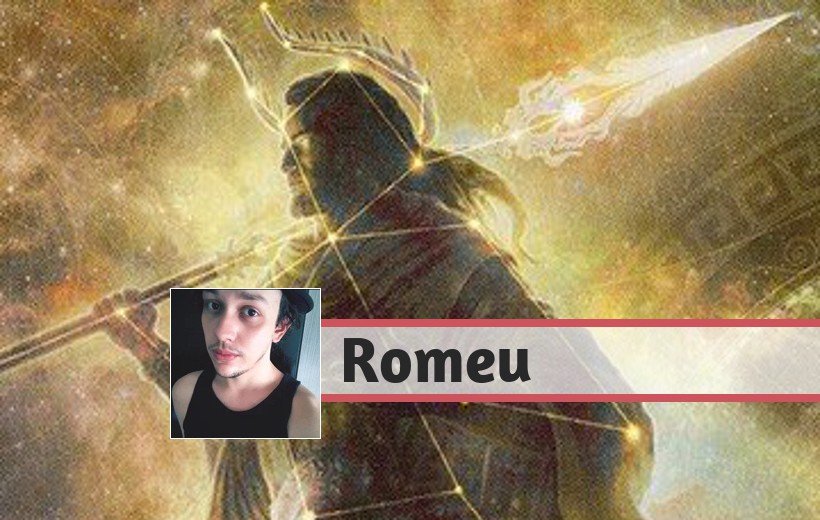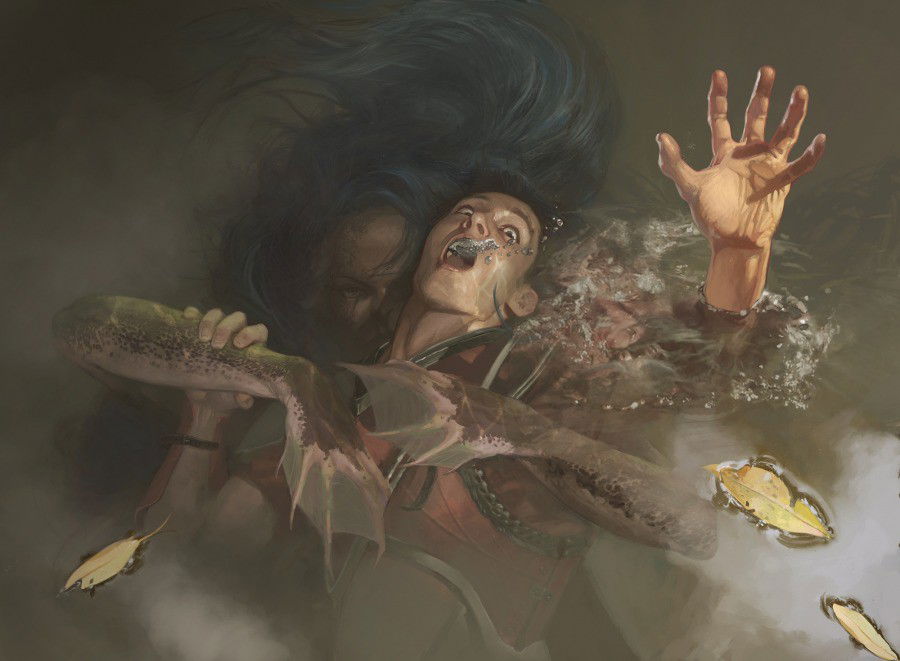Historic Horizons was released just under two weeks ago, but it has already demonstrated in its first week of tournaments that adding more than 370 cards to the format, many of them coming from Modern Horizons II, can significantly shake Historic, creating decks and making space for the diversification of the format, which prior to its launch, was experiencing a predominance of Jeskai Control.
As most of the cards added came from products dedicated to Modern, most necessarily the Modern Horizons sets, and with the recent additions of Staples in multiple formats to Historic such as Thoughtseize, Faithless Looting, Inquisition of Kozilek, among others, it was hoped that the format would approach Modern, and that lists could adopt some elements present there, a move we've already seen with the release of cards like Death's Shadow motivating players to try to adapt well-established archetypes from Modern to Historic, where there are no cards like Fetchlands, Ragavan, Nimble Pilferer, Snapcaster Mage, among other various additions that impact Modern.
Ad
Enter Heliod, Sun-Crowned.

Heliod, Sun-Crowned was once a staple in Pioneer, where he composed one of the decks that were part of the famous Combo Triad that were banned from the format last year, but whose combination is still well known and used within Modern: The ability to deal infinite damage with Walking Ballista.

The Heliod Company was considered the best deck of the format before Modern Horizons II for its ability to blend a game plan that included an infinite damage combo with Walking Ballista and infinite life with Spike Feeder along with a robust foundation that could fairly win games using cards like Auriok Champion to power up its creatures, plus several other powerful additions like Skyclave Apparition.
However, on purpose, Walking Ballista is not present in Historic, one of the cards that did not enter the format through Kaladesh Remastered precisely because of its interaction with Heliod, but Historic Horizons brought to the format a card that also has a powerful interaction with the God of the Sun, an interaction that has been overlooked in Modern as it isn't as effective as an infinite damage combo, but which might be all it takes to bring the deck to the top of the format:

With Scurry Oak in the format, Historic's Lifegain decks gained elements to create a combo that delivers infinite life, infinite tokens, and infinite power to the new creature.
Here's how it works: With Heliod and Soul Warden or Prosperous Innkeeper in play, you cast Scurry Oak, which will trigger Soul Warden or Prosperous Innkeeper, and you gain 1 life. This will trigger Heliod's ability, and you'll put a +1/+1 counter on Scurry Oak.
Scurry Oak's ability will trigger, creating a 1/1 Squirrel token, which will trigger Prosperous Innkeeper or Soul Warden's ability again. You repeat the process as many times as you like to get a huge number of tokens, life and an absurdly high power for Scurry Oak.
A three-card combo might not look exciting, but Heliod, Sun-Crowned's interaction with creatures that gain life when a creature comes into play has been well known in Historic since Theros Beyond Death, and the reality is that this interaction adds a lot of value if your game plan already includes some high-quality creatures, which white has received in abundance in recent sets.
And it is through this idea that Heliod Company exists.
The Deck
As already mentioned, the great advantage of Heliod Company (and a trait that commonly defines the value of a combo deck in a competitive format) is that its cards are naturally good for the game plan that the deck purports to accomplish.
This list takes elements from the Hardened Scales decks, such as Conclave Mentor and Luminarch Aspirant and adds to it the combo pieces and cards that interact with the opponent, as their cost allows the list to add a lot of value with Collected Company.
Ad
How the combo pieces interact with the deck is essential: Heliod, Sun-Crowned has good interaction with Conclave Mentor when used alongside Soul Warden and Prosperous Inkeeper which, in addition to combo pieces, allow the deck to have an advantage over other aggressive decks, and the token created by Prosperous Innkeeper can enable a Collected Company on turn 3, just like the deck tries to do with Llanowar Elves
Scurry Oak interacts very well with Luminarch Aspirant, creating a token if a +1/+1 counter is put on it, while its Evolve ability is easily triggered by cards like Skyclave Apparition and Elite Spellbinder.
These last two cards, by the way, are the only cards that don't seem to have great synergies with the deck, but they do have an essential interaction factor for the archetype, allowing it to remove problematic cards from the boad or the opponent's hand.
Maindeck

The cards that support the combo.
Prosperous Innkeeper has a strong added value as it adds life and mana to its abilities and soon became a staple in Standard. In Historic, the card's impact isn't all that different as we've seen it appear on more lists, ranging from Selesnya decks to decks like Jund Citadel.
Due to the nature of this deck's combo, it's common for the opponent to mistakenly kill these creatures to ensure the combo doesn't take place, which is an extremely disadvantageous play, as they spend a resource to deal with a 1/1 creature that can end up doing nothing at the game.

The combo.
As mentioned before, the advantage of this combo is that your cards interact well with the rest of the deck.
Heliod, Sun-Crowned adds counters to creatures through the lifegain of Prosperous Innkeeper, or even activating its ability to give Lifelink to a creature, which even helps, so the archetype has an advantage against other aggressive decks.
Scurry Oak interacts well with the +1/+1 counters package promoted by Conclave Mentor, Luminarch Aspirant, and Heliod, creating tokens that can block attacking creatures or increase the board pressure.

Any deck looking to abuse Collected Company in Historic these days is likely to be using Llanowar Elves as one of the few ways the format has to speed up its mana, and it's no different in this deck.
Historic is still an explosive format, where players are trying to make impactful plays or trade resources every turn, and having the advantage of a Collected Company on turn 3 can be the difference that allows you to have an edge against some matchups.

The deck's package of +1/+1 counters includes the “combo” of Luminarch Aspirant with Conclave Mentor to boost your creatures' power quickly, as long as they stay in play.

The interaction.
Ad
A trend at Wizards in recent releases has been to give white creatures with strong built-in value, ranging from punitive abilities like taxing effects to card draw, “discard” and removals.
I still consider Esper Sentinel as the best creature that Historic Horizons brought to the format due to the nature of the card against the main decks of the format, especially Jeskai Control, or Indomitable Creativity decks, but as Historic is currently geared towards creature decks as all players are experimenting with the new cards, Esper Sentinel partially loses its usefulness in the current format.
On the other hand, Elite Spellbinder and Skyclave Apparition are already well-known and well-established cards in the competitive landscape, ranging from Standard to Legacy, and significantly impacting the progress of the game with their abilities, whether with Elite Spellbinder removing a crucial card from the opponent's hand on the desired turn, or with Skyclave Apparition exiling an opponent's problematic permanent.

There's not much to be said about Collected Company: the card is one, if not the largest, staple of the format, being present in the most diverse decks that have green in the Metagame and enabling decks ranging from Elves to Jund Sacrifice.
The card is so important to the format that, prior to the Mystical Archives, there was, in fact, a debate on whether Collected Company didn't collaborate too much with green decks, leaving aggressive decks of other colors at a disadvantage.
However, with Mystical Archives, this debate has become obsolete given the power level of spells that have entered the format and, with Historic Horizons, I believe the debate over the discrepancy of advantage between decks using Collected Company and those who don't might go back to being a popular debate if it becomes apparent that there is no point in trying to play aggressive lists without access to the green unless you are playing specific tribal decks like Goblins.

This is the best we can get from a two-colored allied manabase in Historic today for a deck that seeks to be aggressive and optimize its mana every turn, and that's probably why the list chooses to use only two copies of Sunpetal Grove.

The Adventures in the Forgotten Realms manland is in the right color to cast a Llanowar Elves on turn 1, while it can be used as a manasink in Late-game or after a sweeper to end the game.
Sideboard

Although spell-oriented decks are less present in the format these days, they are still extremely viable in the competitive landscape, and an extra copy of Esper Sentinel is a relevant addition to dealing with these decks.
With Tempered Steel decks appearing frequently in ranked matches, Auras still being a viable deck and there are also a number of aggressive decks where gaining 4 life or having a 4/3 body in play makes a difference, so Knight of Autumn is a plausible option within the sideboard.
Ad
I don't know exactly why there's a copy of Conclave Mentor on the Sideboard, since I can't imagine which matches you want a fourth copy of the card in, and I feel like an extra copy of Knight of Autumn would be much better.

Between the Control decks and the Dreadhorde Arcanist decks, there's plenty of room to delay that abuse non-creature spells like Thalia, Guardian of Thraben, whose First Strike also interacts amazingly well with the +1/+1 counters placed by Luminarch Aspirant or Heliod, Sun-Crowned.

Between decks with Kroxa, Titan of Death's Hunger and lists abusing reanimation effects like Priest of Fell Rites or Unburial Rites, there is room for Scavenging Ooze on the sideboard, being another card that interacts very well with Conclave Mentor and that also serves to have an advantage in games where the exchange of resources between creatures is present, which can give you some extra life and a body that needs be answered by the opponent
Rest in Peace demands the opponent to answer it as fast as possible if they are playing decks that rely on the graveyard, which can delay them for several turns.

While also serving against the aforementioned Reanimator decks, Containment Priest is an ideal answer against the Indomitable Creativity decks that gained even more space in the format with Serra's Emissary, a card that, if it comes into play against this archetype, means defeat.

Extra removal, either to help resolve a Sierra’s Emissary that is in play or to deal with other problematic creatures, or even with the infinite tokens made by Scurry Oak on the mirror.
Conclusion
This was the Heliod Company's deck tech, a deck that has proven itself a potential competitor to the Historic Metagame after JumpStart: Historic Horizons' release.
We are moving into the second week since the new set's launch, and definitely there will still be many surprises in the format over the next month. However, combo decks that can adopt other postures during the game tend to be compelling in competitive formats, commonly becoming one of the Metagame's main decks, when they don't become the deck that polarizes the format.
Personally, I don't believe the Heliod Company can become overwhelming, as their combo doesn't immediately win the game, it requires three cards and dealing with creatures is much easier than dealing with something like Thassa's Oracle + Tainted Pact, for example.
However, I truly believe that we will still see this deck evolve a lot and probably settle down to the format.
Thanks for reading!








— 코멘트0
첫 댓글을 남겨보세요